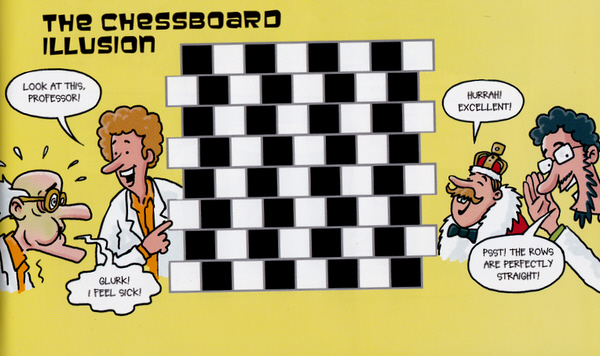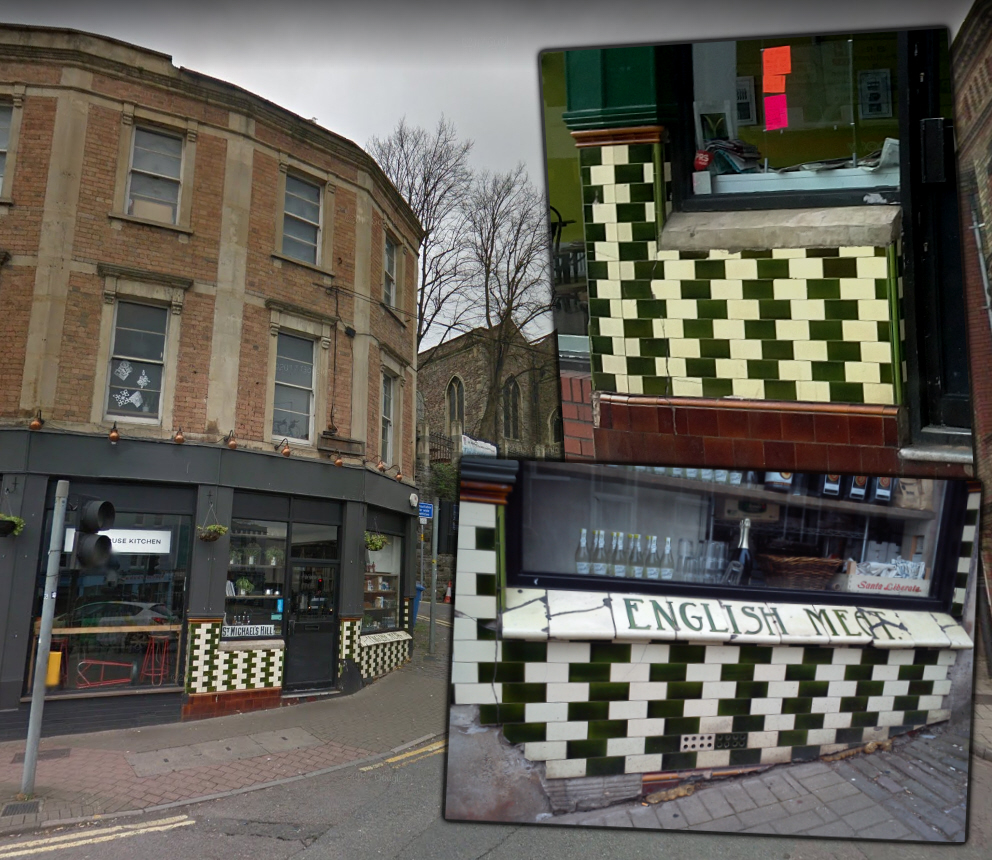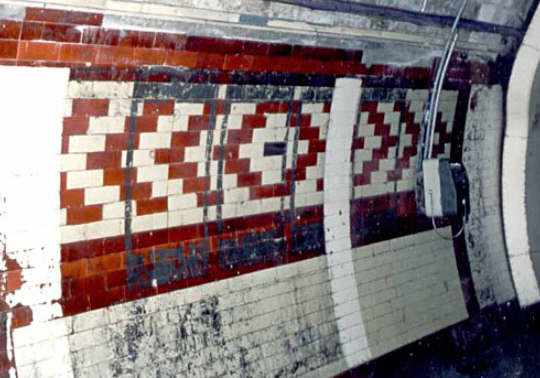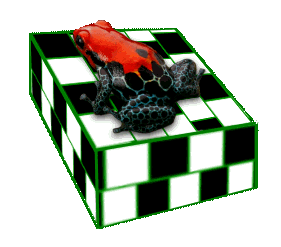|

|
This image was designed to work on the page of the book.For the effect to work best on a screen, move back a bit! |
The illusion was first spotted on tiled surfaces.
One of the most famous examples in the world is known as The Cafe Wall Illusion. It can be found at the bottom of St Michael's Hill, in Bristol, England. Sadly the tiles are rather worn and cracked, but the illusion is still there!

The London Underground is famous for its historical tiles, and years ago there was a striking example of this illusion on the Bakerloo Line platform at Elephant and Castle station.Sadly this old photo is the only known record of these tiles which were covered over back in the 1980s. The original pattern extended along most of the platform and was quite disorientating! |

|
Here's another version of the same trick. None of the lines in this image are curved!

There are lots of important factors to make this work. If you look at the same picture but on a bigger scale, is it as good?

The colours used, the thickness of the
lines and even the brightness of your
screen are also important to
get the best effect, but when it works,
it's mind-twisting.
 By the way ...
By the way ...
you did realise that all the vertical
lines on the background of this page are
straight and parallel, didn't you?

If you like illusions, look at our ILLUSIONS PAGE
Other Links:
